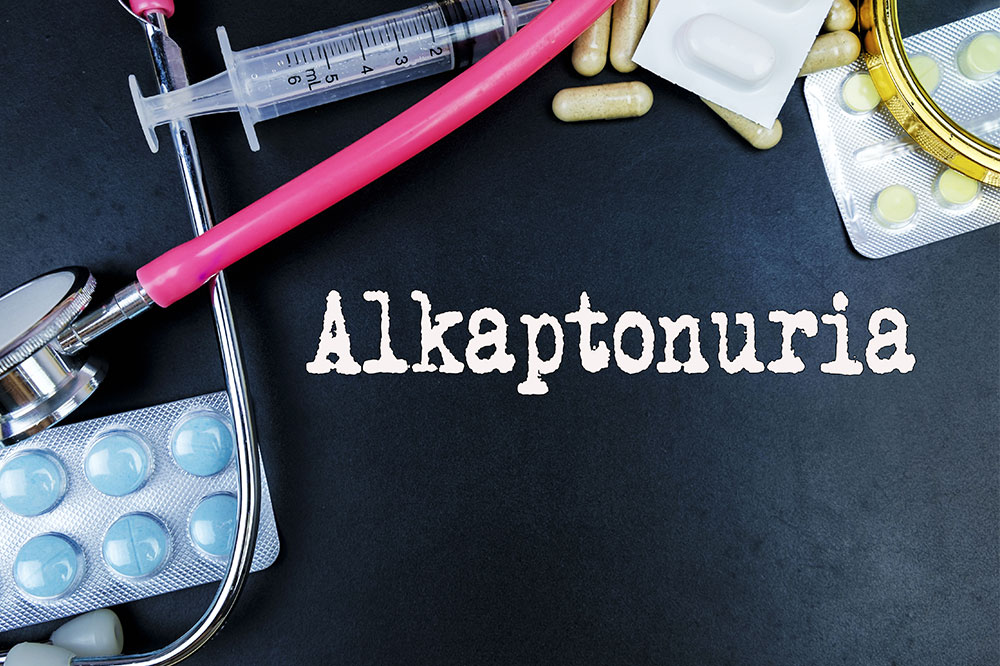
Alkaptonuria – What it is and its management
Alkaptonuria is a rare genetic condition of protein metabolism. It can cause potential damage to the bones, tissues, and cartilage of the affected individual. The condition normally affects one in every 2,50,000 people across the world. Most people are not aware of the condition in childhood since it remains asymptomatic at an early stage. Delay in treatment can result in significant deformities of joints, the spine, and even organ dysfunction. Scroll down to learn more about the condition!
What it is
Alkaptonuria, also referred to as AKU or black bone disease, is an autosomal recessive condition that occurs due to the accumulation of homogentisic acid in the body. Generally, in healthy individuals, certain enzymes in the body tend to break down the proteins (phenylalanine and tyrosine) collected from the food one consumes.
However, people with alkaptonuria have a low or deficiency of this respective enzyme, homogentisate 1,2 dioxygenase (HGD), which breaks down homogenetic acid. Because of this, the amount of homogenized acid (HGA) in the connective tissue increases over time. The buildup of HGA is excreted in the urine, which exhibits a black color when exposed to air.
Symptoms of alkaptonuria
Alkaptonuria is associated with varied symptoms that affect many parts of the body. The common symptoms tend to appear in childhood as follows:
- Urine changes: Infants and children show a noticeable change in their urine color as one of the primary symptoms of alkaptonuria. When exposed to air, the affected person can have dark urine or urine that changes its color to black. It is most common in children.
- Tissue discoloration: As the condition progresses, the affected person, especially those over 30 years old, will notice discoloration of tissues in the skin on the hands, the white region of the eyes, and the outer part of the ear.
- Joint and bone problems: Patients with this metabolic disorder can expect stiffness, decreased mobility, and pain in the knee, hip, and shoulder joints. The condition also decreases the mineral content of the bones, making them prone to fractures.
- Troubled breathing: The bones and muscles surrounding the lungs become stiff to expand, which causes breathing difficulties or shortness of breath in the affected people.
- Heart diseases: The accumulation of homogentisic acid in and around the heart valves can cause irregular heart rates, coronary artery disease, heart failure, and other potential diseases. If older people are affected by the condition, they are at high risk of aortic valve stenosis due to the blockage or decreased blood flow rate from the heart to other parts of the body.
- Kidney stones: The deposition of homogenetic acid also causes kidney stones, especially in those over 50. Accumulation in the bladder or prostate gland tissues can result in bladder or prostate stones.
- Amyloidosis: When the protein metabolism is affected by alkaptonuria, it can lead to the accumulation of amyloid protein in the tissues, known as amyloidosis, impairing its healthy function.
Causes of alkaptonuria
The primary cause behind alkaptonuria is mutations in the HGD gene, which encodes the breakdown of the amino acids phenylalanine and tyrosine, the building blocks of proteins. Mutations in the HGD gene can induce the formation of defective enzymes, which then hinder the breakdown or metabolism of the amino acids.
This can increase the accumulation of HGA, the byproduct of phenylalanine and trypsin metabolism. It can oxidize into an achromatic pigment. The buildup of HG has a pale brown-yellow ocher color, known as ochronosis, that can affect the organs, bones, and tissues.
Treatment for alkaptonuria
Since the condition is rare, there are limited treatment options for alkaptonuria. The ultimate focus of the approach is to provide relief for symptoms and act as supportive care for the patients. Here are some effective treatment strategies:
- Physiotherapy: Following physiotherapy exercises can help patients maintain the strength and flexibility of their joints and muscles, thereby increasing mobility.
- Surgery: Surgery is only recommended by the doctor when the build-up of HGA severely damages the joints or heart valves.
- Meal plan: Patients must avoid excess protein (phenylalanine and tyrosine) intake to slow down the condition’s progress.
Alkaptonuria is classified as one of the inborn errors of metabolism, but it doesn’t pose any threat to the lifespan of the individual. However, the symptoms and prolonged health effects can be complicated and affect the quality of your life when left unnoticed.
Early diagnosis is the key to overcoming the challenges posed by alkaptonuria and improving one’s outlook. Getting a timely diagnosis, eating a healthy meal plan, and making certain lifestyle changes can help alleviate symptoms and slow disease progression.




